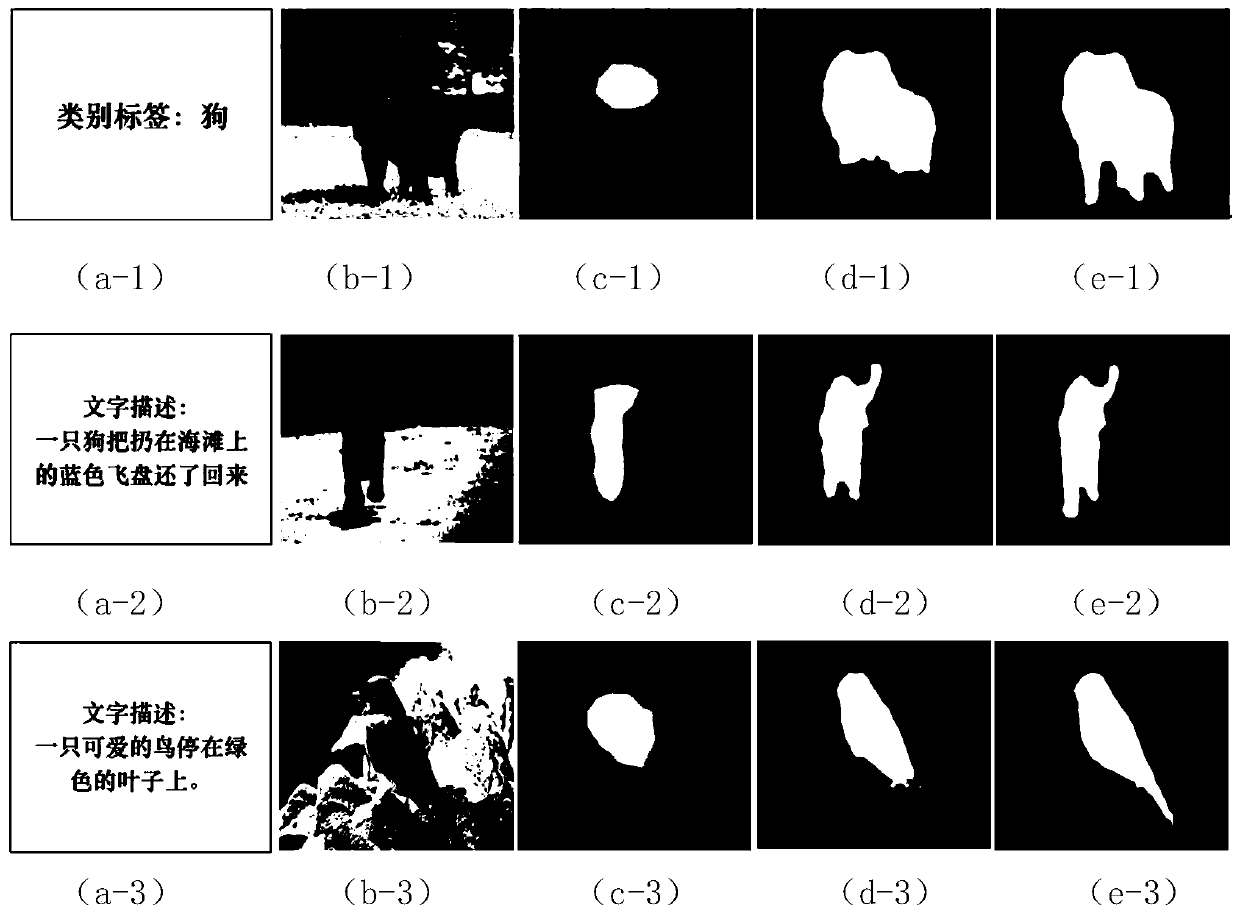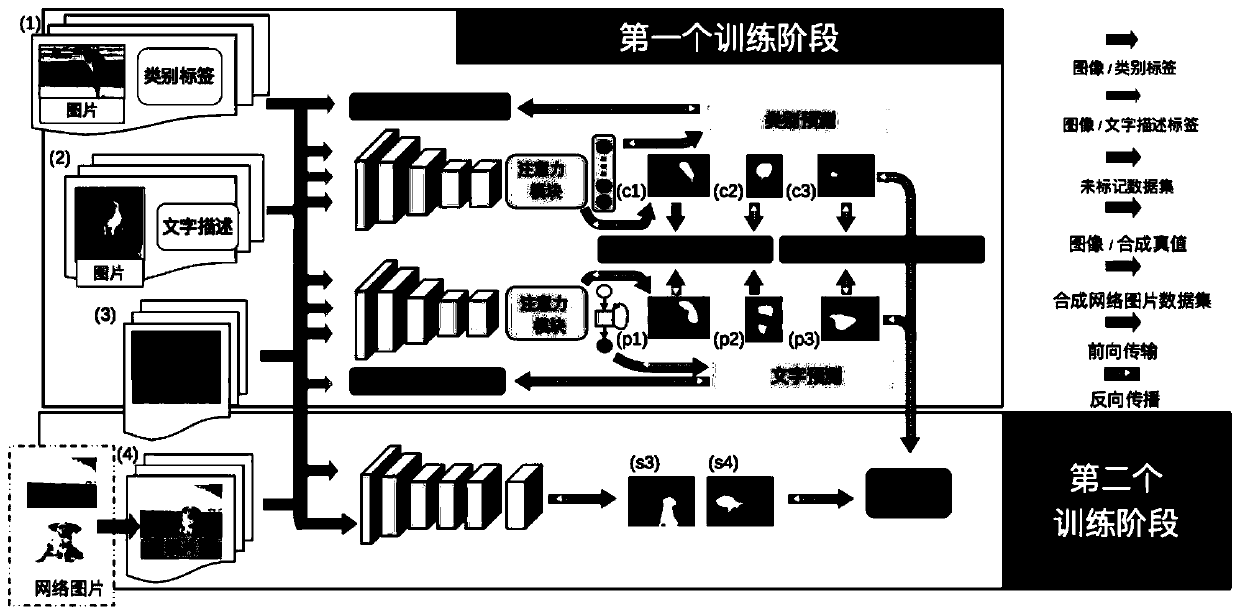Method for detecting image salient target
A detection method, a significant technology, applied in image enhancement, image analysis, image data processing, etc., can solve the problems of lack of clear boundaries between objects and background areas, misclassified pixels, etc.
- Summary
- Abstract
- Description
- Claims
- Application Information
AI Technical Summary
Problems solved by technology
Method used
Image
Examples
Embodiment
[0108] Step 1: Alternately train CNet and PNet on the Imagenet detetion dataset and the MicrosoftCOCO caption dataset respectively. The loss function of CNet is determined by L c (Equation 6) and L at (Formula 8) consists of two items, and the loss function of PNet is composed of L p (Equation 7) and L at (Equation 8) consists of two terms, L at This enables a network supervised by one label to benefit from the information provided by another label. After 200 iterations, we introduce L on the unlabeled Imagenet classification dataset. ac The loss function (Equation 10) supervises PNet and CNet, L ac The loss function encourages the network to detect salient regions rather than task-specific regions. The significant test results of each module are attached Figure 4 In Cls, Cap, Avg, AT, AC shown.
[0109] Step 2: Use the foreground keywords and background keywords to collect two types of pictures from the Internet, including the salient target picture on the white backg...
PUM
 Login to View More
Login to View More Abstract
Description
Claims
Application Information
 Login to View More
Login to View More - R&D
- Intellectual Property
- Life Sciences
- Materials
- Tech Scout
- Unparalleled Data Quality
- Higher Quality Content
- 60% Fewer Hallucinations
Browse by: Latest US Patents, China's latest patents, Technical Efficacy Thesaurus, Application Domain, Technology Topic, Popular Technical Reports.
© 2025 PatSnap. All rights reserved.Legal|Privacy policy|Modern Slavery Act Transparency Statement|Sitemap|About US| Contact US: help@patsnap.com



